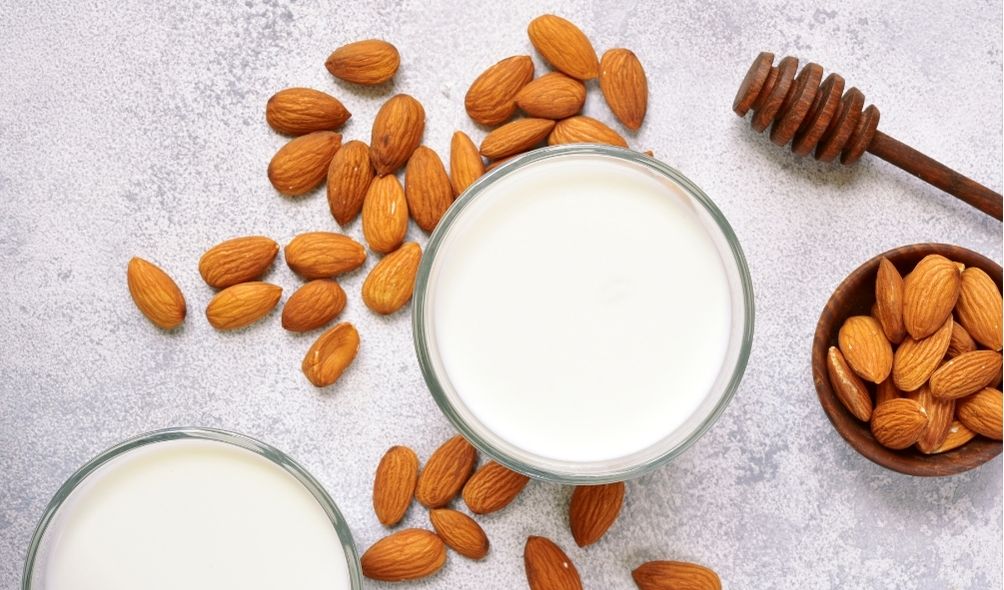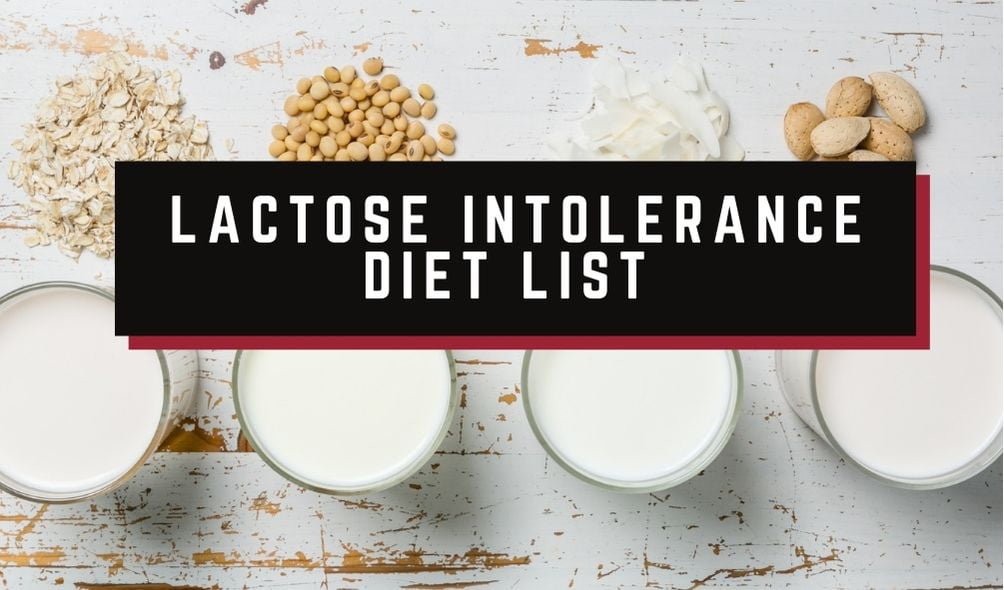A lactose intolerance diet list can be your only prescription that alleviates your symptoms.
Lactose is a type of sugar that is present in milk and dairy products. However, some may suffer from a condition called lactose intolerance.
In fact, some may experience symptoms appearing after drinking milk or eating dairy products. However, lactose intolerance is a condition that is totally different from milk allergy that may cause dairy inflammation symptoms.
We must take care of our diet and include other foods that provide us with the calcium we need.
Lactose intolerance is a digestive disorder that is increasingly present in the community. If you start to feel discomfort such as abdominal pain, after having coffee with milk or eating-related breakfast cereals, you should consider the possibility of taking them.
Inability to digest lactose or the sugar in milk due to the lack of lactase. The latter is an enzyme found in the small intestine whose function is to absorb lactose.
Discomfort begins when the metabolism of lactose does not take place properly due to excessive consumption of sugar. This causes it to reach the colon and waste products that cause discomfort are generated.
Check out our latest posts
- Can You Chew Sugar-Free Gum While Intermittent Fasting?
- The Coffee Loophole for Weight Loss: Why It Is The Next Fad Diet?
- Optavia Ruined My Life: The Dark Side Of Optavia Diet
- Metabolic Confusion Diet Plan for Endomorph: 30 Days Free PDF
- AIP Reintroduction Phase; How to Start It The Right Way
Let’s talk about lactose
Lactose is the sugar found in milk and its derivatives. It can be found in natural and synthetic products. Among the first are cow, goat or sheep milk.
In industrial products it can be in the form of preservatives, so it is very easy to find it in processed meats, such as sausages or pies. Other foods in this group are margarine, cold cuts, ice cream, sausages, sauces, enriched cereals, prepared foods, and others.
For this you need to be careful of what you consume, because lactose is present in many foods that are consumed daily.
What is lactase?
It is the enzyme that facilitates the absorption of lactose in the small intestine. It breaks it down into simpler sugars and makes the metabolism process easier.
When the body does not produce enough lactase or the enzyme does not do its job, one must start talking about lactose intolerance.
Symptoms
Symptoms that alert this intestinal disorder, and the most frequent symptoms:
- flatulence.
- Abdominal pain
- Diarrhea
- Redness around the anus.
- Nausea or vomiting.
Diagnosis
There are currently two methods for diagnosing lactose intolerance, which we will see later.
Your trusted doctor will refer you to the right doctor according to your characteristics.
1. Exhaled hydrogen test
You will need to eat a certain amount of lactose. This non-invasive test allows the determination of the amount of hydrogen that consists of the intestinal flora from exhaled air.
If more hydrogen is produced in the breath, the condition is confirmed.
This is because when lactose is not properly digested in the small intestine, it reaches the large intestine to be broken down by bacteria that produce a lot of hydrogen.
2. Blood test
It consists of measuring the amount of glucose through blood tests. This will be done before and after eating lactose.
If your body produces the enzyme lactase in sufficient quantities, the sugar will break down and the amount of glucose in your blood will increase. If the results show low levels of this element, you have the disorder.
Types of lactose intolerance
Acquired hypoperfusion
It develops gradually, over time as the body secrete lactase in smaller amounts than normal. After that, when you reach the threshold the symptoms start to appear.
However, you should remove or reduce all dairy products to an amount that won’t trigger any symptoms. There may be cases of people who cannot tolerate cheese but yogurt or curd cheese.
Secondary or temporary intolerance
It is the result of other problems that the patient had previously experienced that caused damage to the intestines. Among them we find:
- Celiac disease. Check out how to cut out gluten from your life.
- surgeries.
- Intestinal infections.
- Inflammatory diseases.
- Consumption of antibiotics.
- Malnutrition.
- Severe diarrhea.
- Congenital intolerance
- Difficulty since childbirth, when the baby does not tolerate lactose in the milk produced by the mother.
It is rare, but no less sensitive to it. Pay close attention to the baby’s reactions after breastfeeding.
Treatment:
Depending on the degree of intolerance, lactose should be removed from the diet. Excluding milk is worth consuming other calcium-rich foods. Among these we find:
- Salmon
- Sardines.
- Spinach
- Shrimp
- Broccoli
- Tofu.
- Beans.
lactose intolerance foods you can eat and replace milk with:

There are other foods that are rich in calcium but low in lactose that you can include in your diet. they:
- oats.
- rice.
- soybean.
- Almonds.
Milk alternatives allowed on lactose intolerance diet list:
There are dozens of non-dairy milk types that include:
- Soy milk.
- Oat milk.
- Almond milk.
- Coconut milk.
- Rice milk.
- Cashew milk.
With all the above options, you can make homemade milk. However, you may consider the following foods for calcium:
- pulses.
- Seeds.
- Dry fruits.
- tuna.
Other foods to include on Lactose intolerance diet list
Everything, you will have to just remove milk and dairy products but you are free to eat whatever you want like:
- Beef, lamb, chicken, turkey, and other meats.
- Salmon, trout, haddock, shrimp, and oysters are among the seafood options.
- Eggs.
- Broccoli, cabbage, peppers, and onions.
- Carrots, tomatoes, and other vegetables
- Fruits include apples, bananas, oranges, pears, avocados, strawberries, and grapes, among others.
- Rhizomes like potatoes, sweet potatoes, taro, turnips, and other kinds.
- Almonds, macadamia, walnuts, hazelnuts, seeds, pumpkin seeds, and other nuts and seeds
- Extra virgin olive oil, coconut oil, avocado oil, and other healthy fats and oils.
- Sea salt, garlic, turmeric, rosemary, and other spices
